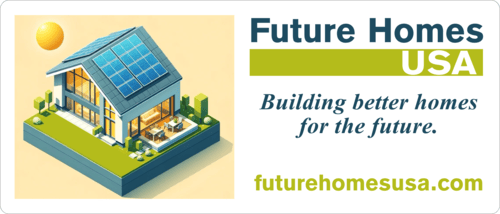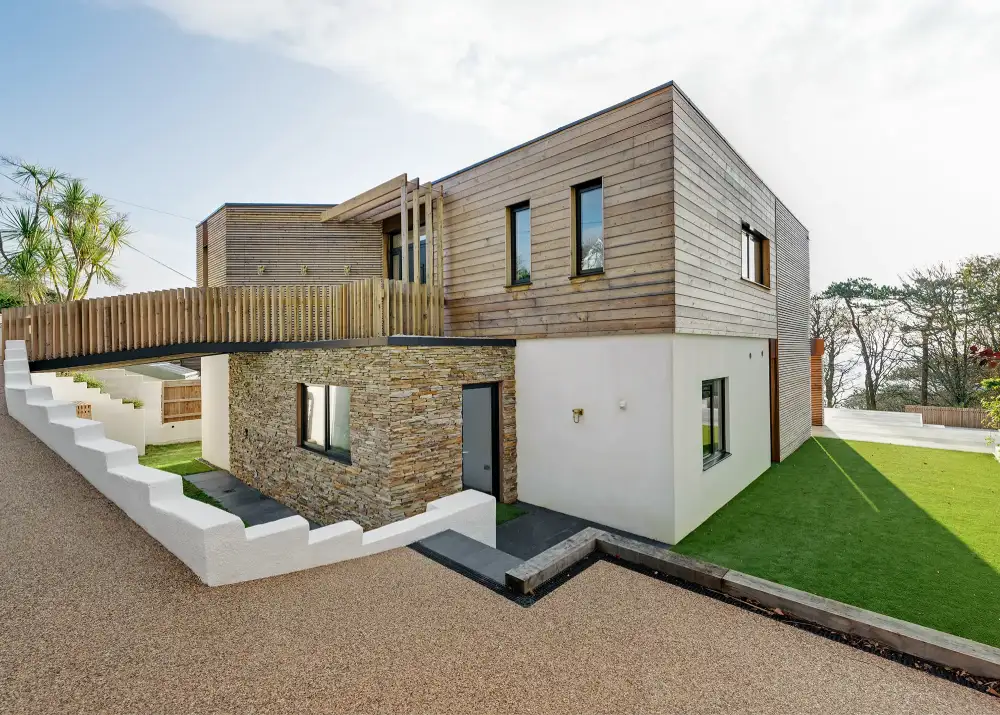Building a sustainable ICF home construction is an exciting and forward-thinking way to create an eco-friendly living space. Insulating Concrete Forms (ICF) offer an advanced building technique that combines strength, energy efficiency, and sustainability. By using sustainable ICF home construction, homeowners can enjoy long-term energy savings, better indoor comfort, and a reduced environmental footprint.
In this blog, we’ll dive into the benefits of ICF construction, how it contributes to energy-efficient ICF homes, and why it’s becoming the go-to choice for those committed to eco-friendly ICF construction. Whether you’re considering building a new home or want to upgrade your current one, this guide will help you achieve a sustainable living environment.
What is ICF Construction?
ICF (Insulating Concrete Forms) construction is a modern building method that delivers exceptional durability, comfort, and sustainability. The process involves stacking foam forms, which are then filled with concrete to form solid, reinforced walls. By combining reinforced concrete with high-performance insulation, ICF walls create a robust structure that stands strong against extreme weather, pests, and fire. Unlike traditional construction, this system offers consistent indoor comfort, reduces outside noise, and requires minimal maintenance over time. For homeowners seeking long-term value, ICF construction is a smart investment that blends strength with energy-conscious living.
How Insulating Concrete Forms Work
The ICF method begins with lightweight foam forms that are stacked like large building blocks to outline the walls of the structure. Once in place, the hollow centers are filled with concrete, creating a solid, reinforced wall encased in insulation. This design not only strengthens the building but also helps regulate interior temperatures by slowing heat transfer. The result is a stable, quiet, and energy-efficient ICF home that performs well year-round without excessive reliance on heating or cooling systems.
Why ICF Homes are Naturally Energy-Efficient
One of the primary reasons for choosing sustainable ICF home construction is that these homes are naturally energy-efficient. The insulating properties of the foam form prevent heat loss, which means less energy is required to keep the home at a comfortable temperature. This inherent energy efficiency reduces the need for air conditioning in the summer and heating in the winter, leading to lower energy bills and ICF home energy savings. These homes are also highly resistant to drafts, ensuring a consistently comfortable living space.
Why ICF is Ideal for Sustainable Home Building
ICF construction is the perfect solution for anyone looking to build a sustainable home. It offers a range of benefits, such as superior insulation, long-term energy savings, and reduced carbon footprint. Let’s explore why ICF construction is one of the best choices for homeowners who want to make eco-conscious decisions.
Superior Insulation and Airtightness
The secret to sustainable ICF home construction lies in its exceptional insulation. The foam forms provide an airtight barrier that prevents drafts and heat loss. This airtightness significantly boosts energy efficiency, reducing the need for external heating and cooling systems. ICF home design for energy efficiency ensures that the home retains heat during winter and stays cool during summer, making it a smart, eco-friendly investment.
Long-Term Energy Savings and Reduced Carbon Footprint
Building a sustainable ICF home construction offers lasting benefits, with lower energy bills and a smaller carbon footprint. The highly insulated walls prevent energy loss, reducing the need for constant heating or cooling. As a result, energy-efficient ICF homes are not only cost-effective but also environmentally responsible. By choosing a green building with ICF, you are contributing to a healthier planet while saving money over the long term. The combination of ICF home energy savings and sustainability makes this an excellent investment for any homeowner.
Disaster Resistance and Lower Maintenance
Another advantage of eco-friendly ICF construction is its durability. ICF homes are known for being fire-resistant, wind-resistant, and able to withstand seismic activity. This makes them ideal for areas prone to extreme weather conditions. Additionally, the strength and durability of ICF homes reduce the need for ongoing repairs, making them a lower-maintenance, cost-effective option over time.
Steps to Build a Sustainable ICF Home
Building a sustainable ICF home involves several key steps to maximize its energy efficiency and eco-friendliness. Here are some important steps to follow when considering ICF construction for your next home.
1. Design for Passive Solar and Energy Efficiency
One of the best ways to ensure your sustainable ICF home construction is energy-efficient is by designing for passive solar. By positioning windows and walls strategically, you can maximize natural sunlight and reduce the need for artificial heating. ICF home design for energy efficiency ensures that your home takes full advantage of the sun’s warmth, helping you cut energy costs.
2. Use Low-Carbon Concrete Mixes and Recycled Materials
To further enhance the sustainability of your ICF home construction, consider using low-carbon concrete mixes and recycled materials. This practice not only reduces the environmental impact of your building project but also contributes to the overall eco-friendly ICF construction. Choosing sustainable materials like these is an essential step in how to build an ICF home sustainably.
3. Install High-Performance Windows and Doors
Another importantl step in building an energy-efficient ICF home is installing high-performance windows and doors. These energy-efficient products are designed to minimize heat loss and prevent air infiltration, further improving the home’s insulation. By choosing double or triple-glazed windows and weatherproof doors, you can maintain an ideal indoor temperature while maximizing energy efficiency.
4. Pair ICF with Renewable Energy (Solar, Geothermal, etc.)
Integrating renewable energy sources, such as solar panels or geothermal heating, is a smart way to complement your ICF construction and renewable energy efforts. This combination ensures that your home can produce its own energy, making it truly sustainable. ICF home energy savings are significantly enhanced when paired with solar power or other renewable energy sources, helping you achieve energy independence.
5. Reduce Construction Waste and Optimize Resources
Sustainable building practices extend beyond the structure itself. Reducing construction waste and optimizing resources during the building phase can significantly lower your home’s environmental impact. Whether it’s reusing building materials or finding more efficient ways to reduce waste, every step counts in green building with ICF.
Best Practices for Sustainable Finishes and Systems
Once the structure of your ICF home is complete, the focus shifts to creating a sustainable, healthy living environment. Here are some best practices for ensuring your home remains eco-friendly and energy-efficient.
Use FSC-Certified Wood, Low-VOC Paints, and Non-Toxic Materials
Choosing the right finishes is crucial for maintaining a healthy, sustainable living environment. Opt for FSC-certified wood, low-VOC paints, and non-toxic materials to improve indoor air quality and create a safe, eco-friendly home. These materials will contribute to both the comfort and sustainability of your energy-efficient ICF homes.
Add ERV/HRV Systems for Better Indoor Air Quality
An Energy Recovery Ventilator (ERV) or Heat Recovery Ventilator (HRV) system is a great addition to your eco-friendly ICF construction. These systems ensure that your home remains well-ventilated while maintaining energy efficiency. By exchanging stale indoor air with fresh outdoor air, they help improve air quality without sacrificing energy savings.
Install Water-Saving Fixtures and Rainwater Harvesting
To further reduce your home’s environmental footprint, consider installing water-saving fixtures, such as low-flow faucets and showerheads. Additionally, rainwater harvesting is a great way to collect water for landscaping or other non-potable uses. These measures contribute to both ICF home energy savings and your overall commitment to sustainability.
Cost Considerations for Eco-Friendly ICF Homes
While the upfront cost of building an energy-efficient ICF home may be higher than traditional construction, the long-term savings and environmental benefits make it a worthwhile investment.
Upfront vs. Long-Term Savings
The initial cost of ICF construction might be higher than conventional building methods, but the long-term savings are substantial. With reduced energy consumption and fewer maintenance requirements, your eco-friendly ICF home will save you money over its lifespan. This makes the investment in sustainable ICF home construction a smart choice for homeowners looking to maximize both energy savings and durability.
Available Green Building Tax Credits and Incentives
Homeowners who choose to build a sustainable ICF home construction can often take advantage of green building tax credits and other incentives. These financial incentives help offset the initial costs of building with ICF, making it a more accessible option for those committed to reducing their environmental footprint.
Final Thoughts: Why ICF is the Future of Sustainable Home Building
Sustainable ICF home construction is the future of eco-friendly building. With its superior insulation, energy efficiency, and disaster resistance, ICF homes are the perfect choice for homeowners who want to reduce their carbon footprint and enjoy long-term energy savings. The combination of sustainable ICF home construction and renewable energy solutions makes these homes ideal for sustainable living.
If you’re interested in learning more about ICF home energy savings or how to incorporate energy-efficient ICF homes into your building project, don’t hesitate to contact us for personalized advice and consultation.

